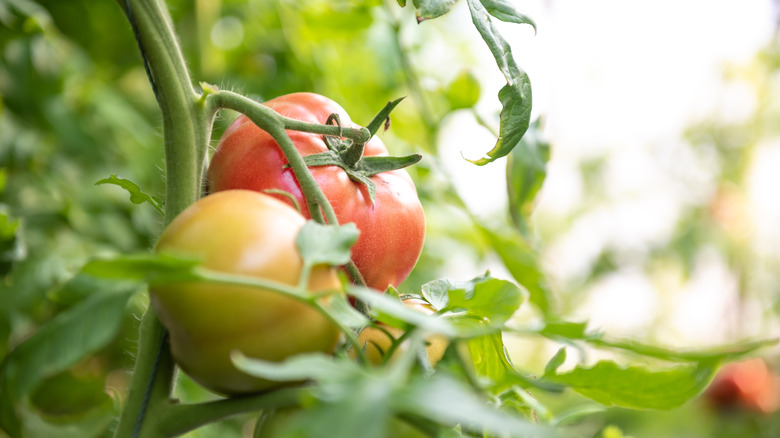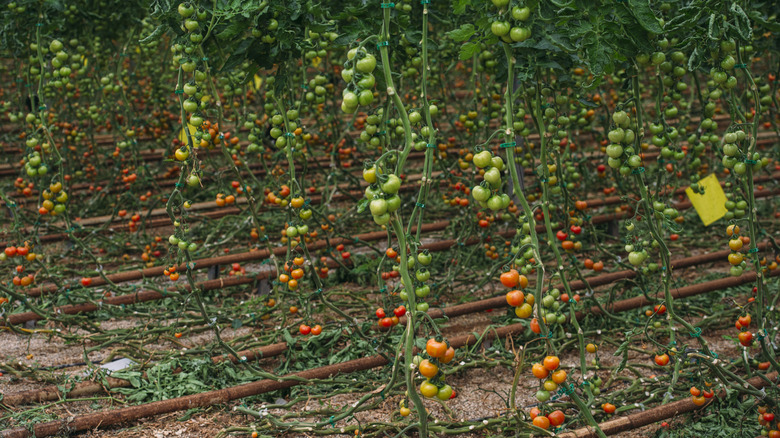The Tell-Tale Sign Your Tomato Plant Isn't Getting Enough Sun
Sunlight and water are integral to maintain a healthy garden, but some plants require different amounts of light. Plants that need full sun conditions require at least six hours of direct sunlight a day, but you could also grow a flourishing shade garden with plants that require less than two hours such as American holly, witch hazel, and wild ginger. However, sun-hungry plants like tomatoes (Solanum lycopersicum) should see as little shade as possible. Similar to eggplants and peppers, tomatoes love the heat and are extremely susceptible to frost. They can even grow as perennials in frost-free environments. If your tomato plant is not getting enough sun, there will be signs: one example, a lack of flowering blooms.
Like any fruit (and yes – tomatoes are scientifically classified as fruits), a tomato plant will produce flowers. Their blooms are golden, star-shaped flowers that appear in the summer or fall. They need to be pollinated for the edible crop we all know and love to be produced, and tomatoes are especially indebted to bumblebees and other wild bee species to help them to thrive. However, the absence of adequate light may lead to plants that grow more leaves without blossoming. Some individuals may want to grow their own edible patio garden, but the space may lack the full sunlight that would be required.
The problem with a lack of sunlight (and how to help your tomatoes thrive)
Crop rotation is an important aspect of growing tomatoes. Repeatedly using the same plot risks building up pests and soil-borne diseases so you will need to be mindful about planting your crop in spots that don't get enough sunlight. You will begin to see more stem and leaf sprouts because of the increase of chlorophyll exposure as the plant seeks out more sunlight. Tomatoes may never flower if they are kept in the shade for too long. They're also susceptible to wild swings in heat. Daytime temperatures around 80 to 90 degrees Fahrenheit are ideal for tomato plants, but they may fail to flower if nighttime temps drop below 55 degrees, or if a heat wave delivers consistent days over 90 degrees.
There is not much you can do about the weather and some shade will be unavoidable if you're properly rotating your fruit and vegetable garden crops. However, there are steps you can take that will give your tomatoes their best shot in life. For instance, consider growing a different variety of tomatoes. Heatmaster, Solar Flare, or Summer Set tomatoes are better equipped for hot weather, whereas many kinds of cherry tomatoes do better in cooler, less sunny conditions because they take fewer days to mature (and they set fruit over a wider temperature range). Your tomato plants may also get enough sunlight, but fail to produce flowers for other reasons, such as an overabundance of nitrogen in the soil. At a certain point, you might have to give in and plant your tomatoes in a sunnier location during the next growing season.

